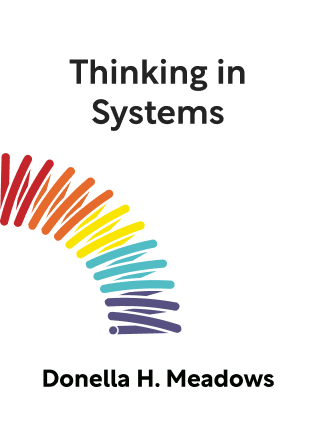

This article is an excerpt from the Shortform summary of "Thinking in Systems" by Donella H. Meadows. Shortform has the world's best summaries of books you should be reading.
Like this article? Sign up for a free trial here .
What are meta systems? How do they work, and how does a meta system affect how the system works overall?
Meta systems are part of the system that defines the systems purpose. Meta systems are abstract, but important part of the system.
Read more about meta systems below.
Defining Meta Systems
Beyond the system’s information and control layer—how it regulates itself—is an even higher level of abstraction—how a system defines its purpose and changes its purpose. These are meta systems.
Self-Organization
Self-organization is the ability of a system to change itself, and possibly reinvent itself. This leads to impressive resilience, as the system can adapt to changing circumstances. It’s also more powerful than any leverage point we’ve discussed so far, because a self-organizing system can improve its rules, information flow, and feedback loops.
As previously explained, vastly complex self-organization can result from a few simple rules:
- Biological evolution results from 1) the encoding of life in DNA, 2) the ability to generate mutations in DNA, and 3) the pressure of natural selection to select for the more successful mutations.
- Likewise, human technology develops with 1) the knowledge of existing science and technology, 2) the human creativity that generates new innovations, and 3) the market forces that select for more useful innovations and reward creators.
The leverage point is therefore to modify a system’s ability to self-organize. On one hand, you can improve a system’s resilience by enabling self-organization.
(Shortform note: Taking the technology example above, this can mean:
- Preserving and spreading human knowledge (as in education)
- Enabling more creativity and generation (as with less restrictive patent laws and capital investment in entrepreneurship)
- and efficient market forces (as in preventing monopolies from destroying new enterprises, and lowering subsidization of failed startups))
On the other hand, you can make a system brittle by quashing self-organization. Invert any of the enablers above, and you reduce self-organization—this may mean eliminating biological diversity by killing species; suppressing access to human knowledge; or crushing new experiments as they arise.
Any system that becomes so calcified it can no longer self-organize, or that deliberately suppresses self-organization, is doomed in the long run.
System Goals
A system’s goals determine its behaviors. Changing goals can mutate every lower leverage point to suit the system’s new goals. Meta systems are a part of these goals.
Usually changing elements in a system has little effect, except if the element can change higher leverage points, such as system goals.
- Put Hitler in charge of 1930s Germany, and you create a Nazi Germany with Nazi goals and very different system behaviors.
- Put Gorbachev in charge of the Soviet Union, and you create goals of glasnost and perestroika, in turn changing the society’s information flows and ability to self-organize.
Therefore, the author argues that any technology or system isn’t inherently good or bad. It depends on the goals of who’s using it.
System Paradigm
A system’s paradigms are its implicit beliefs about how the world works. They’re often so deeply ingrained in our minds that we don’t consciously articulate them—there’s no need to, because we believe everyone else believes them too.
In Western societies, we have these paradigms:
- Money represents value. Someone who has more money is more valuable than someone who has less of it.
- It’s possible for someone to “own” land on this planet.
- Growth is good. Continuous improvement is good, and stasis is bad.
These paradigms are so natural we don’t often think about them, yet they govern much of what we do. These paradigms drive every lower leverage point—the system goals, the information flows, and so on. These paradigms govern how we set up rules around property ownership, how we set up systems for social welfare, and how we reward system actors that produce growth.
Yet these paradigms can be completely foreign to other societies, either traditional societies that exist today or historical ones from just thousands of years ago.
It can seem harder to change system paradigms than stocks and flows. But a single person with a single idea can generate a paradigm change, which can in turn overturn the entire system:
- Copernicus introduced the paradigm that the Earth orbits the sun, and that we weren’t the center of the universe. This in turn strengthened the societal influence of science and weakened that of religion.
- Adam Smith introduced the paradigm that countless individual actors acting in selfish motives can create a surprisingly functioning economy. This in turn strengthened the role of free markets and weakened that of top-down control.
Outside of the originator of the paradigm, getting a whole system to shift a paradigm can take considerable time and effort. But ultimately, a paradigm shift can completely revolutionize every element of a system.
Transcending Paradigms
The highest leverage point, even beyond system paradigms, is to free yourself from fixed paradigms. A paradigm is just an idea. No paradigm is absolute truth, and it contains just a small slice of understanding an endlessly complex universe. To transcend paradigms is to prevent yourself from being fixed to any particular paradigm, and to be flexible. Meta systems help define this.
(Ironically, the idea that there is no true paradigm is itself a paradigm, and the author finds this hilarious.)
To let go of paradigms is to be comfortable with not knowing, not having certainty. This is empowering—if you are no longer enslaved by paradigms, then you can choose whichever one you please, or none at all.
Notes on Using Leverage Points
These 12 leverage points are just a guideline. The exact order is less important than which leverage points are more or less changeable in the system you’re studying.
Understanding leverage points in theory is just the beginning. Now you need to deeply analyze a system—understand its structure, its rules, its paradigms—to begin to know where you can push and prod. To get an accurate understanding, you may need to discard your own prior assumptions and paradigms about how the world works.

———End of Preview———
Like what you just read? Read the rest of the world's best summary of Donella H. Meadows's "Thinking in Systems" at Shortform .
Here's what you'll find in our full Thinking in Systems summary :
- How the world, from bathtub faucets to fish populations, can be seen as simple systems
- The key system traps that hold back progress, such as escalating arms races and policy addiction
- Why seeing the world as systems can give you superpowers in work and life






